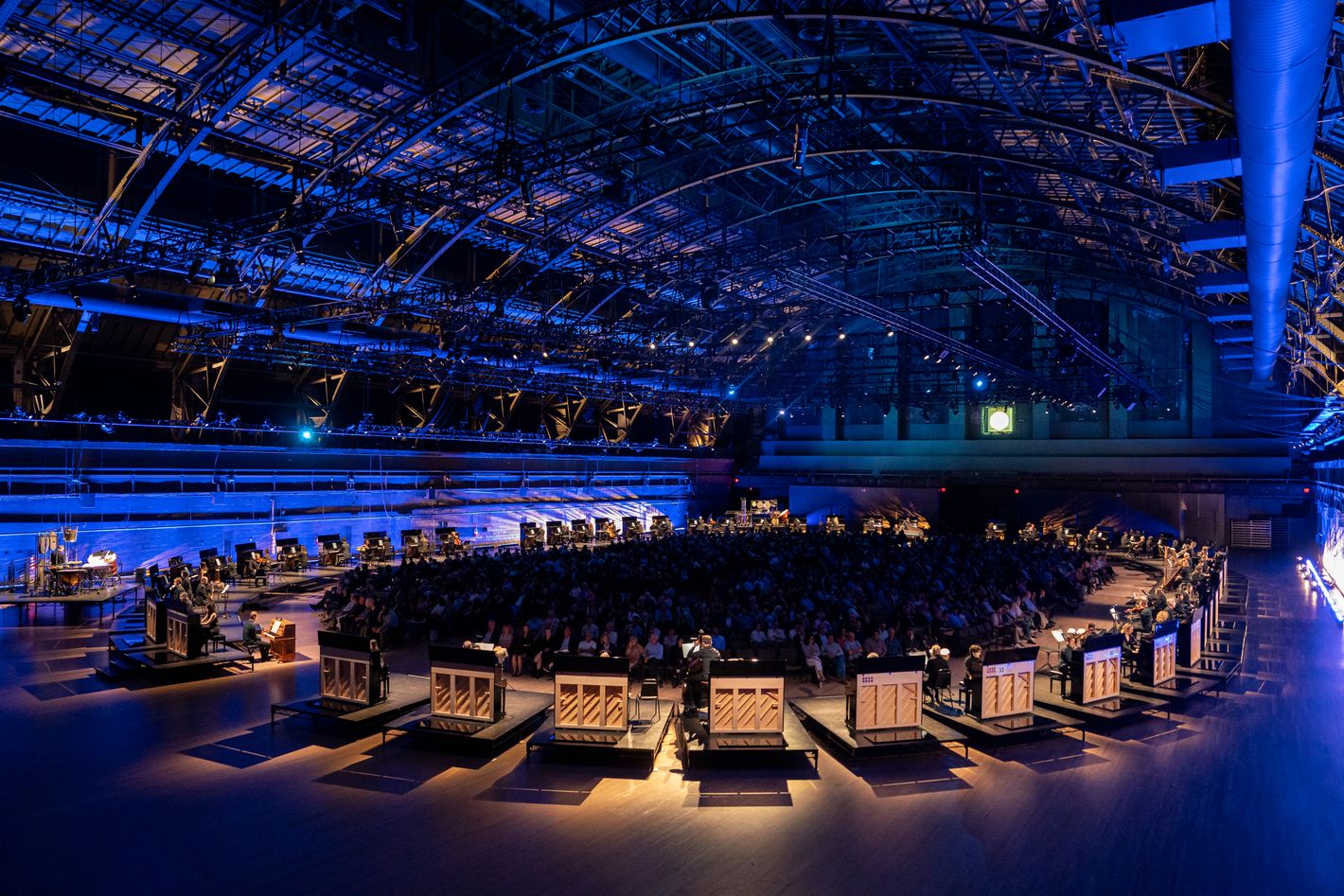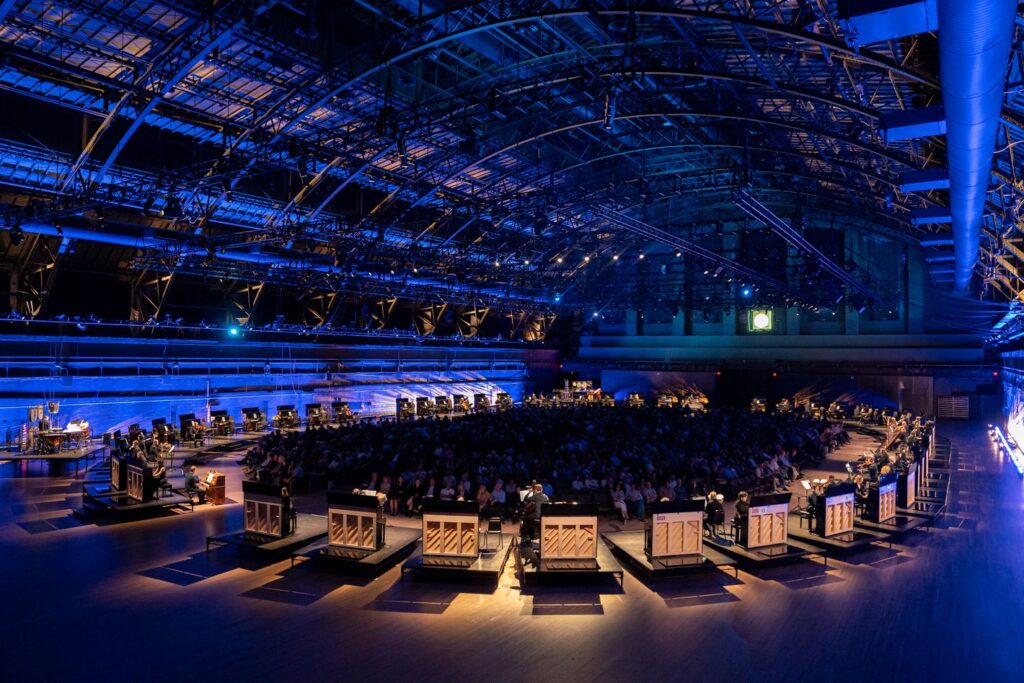
If you’ve ever spent a few hours in the woods at night, when bugs click, trees grumble, creatures of indeterminate size and ferocity trundle through the undergrowth, and coyotes howl in roving choirs, then you’ll have some sense of what the composer Georg Friedrich Haas aims to accomplish in his wraparound work 11,000 Strings. Haas, an Austrian sage of microtonal music, has created his own sonic forest in the Park Avenue Armory’s Drill Hall, encircling the audience with 50 pianos (each of which has about 230 strings) and a chamber ensemble (Klangforum Wien) that included a contingent of thunderous percussion. For just over an hour, currents of gritty, glinting sound swirled across the hall, gathering into thick roars or thinning out into quiet frenzies.
Two elements made the event bewitching, at least for a while. The first is that it embodied the exact opposite of the canned music that permeates our lives. An orchestra squeezed out of a car stereo still resembles an orchestra, but listening to a recording of 11,000 Strings would be like swimming in a water glass. There’s no way to approximate this full-body experience or reproduce the effect of millions of richly acoustic notes shooting in all directions.
The other source of the work’s character lies in the way Haas uses microtones, the minute shadings of pitch that lie between the notes of a western scale. Tuning a piano’s 88 keys, like slicing up the year into smaller segments of time, is normally an exercise in approximation. Fifths aren’t perfect and semitones are slightly off to prevent the keyboard from getting more jangly in some keys than in others. For this work, Haas had each upright piano retuned, cutting out the accepted cheats that equal temperament requires, and instead building in infinitesimal differences between adjacent instruments. The result is a widening drift: If you played a C-major scale across all 50 pianos, it would slide progressively into different keys.
Haas is not asking listeners to detect those infinitesimal differences between, say, one C-sharp and the next. What matters is the cumulative buzz, the sense of harmonic slippage — the graininess in what looks, on paper, like a simple major chord. The tuning is what keeps the air atremble, preventing the work from settling into a too-comfortable groove.
The effect in the Drill Hall was electrifying at first, then gradually more frustrating. I kept hoping Haas would peel apart the densely packed timbres, adding more pinpoints and precision. But the pianists donned black gloves so that their fingers could roll without injury across 50 keyboards at once, over and over, like waves crashing against cliffs. Outdoors, the ear quickly learns to differentiate the panoply of nature’s noises. In the hall, the sonic variety eventually oozed together into a brown mass.
I wished, too, that I could get up and move around to feel the balance change. Confined to my seat, I had a flutist to my left and a cellist to my right, with three or four upright pianos at their shoulders, and no matter how busy the score grew, or how ferociously the bells clanged, gongs pealed, or the bass drum erupted, I always felt like I was taking in only a slice of a vast panorama.
“11,000 Strings is not an experiment,” Haas writes in a program note, echoing the 20th-century avant-garde composer Edgard Varèse (“My experiments always wind up in the wastepaper basket”). And it’s true that it comes across as a form of supremely intentional wildness. That tension between chance and control, the composer’s command over so many swarms of sound, gives the work both its overwhelming scope and its disappointing sense of sameness.
11,000 Strings is at the Park Avenue Armory through October 7.
Related
Georg Friedrich Haas’s swirl of microtones is adventurous but grows blurry.

































































